Madison, WI Pollen and Allergy Report for Summer 2023
Pollen Allergy Trends in Madison, WI
When is pollen lowest in Madison, WI?

February
Lowest month total PPM
Avg. PPM
When is pollen highest in Madison, WI?

May
Highest month total PPM
Avg. PPM
How does pollen in Madison, WI compare to Wisconsin?
Madison has a higher average PPM than the state of Wisconsin.
Madison yearly avg PPM:
Wisconsin yearly avg PPM:
How does pollen in Madison, WI compare to the USA?
Madison has a higher average PPM than the USA.
Madison yearly avg PPM:
USA yearly avg PPM:
Is pollen worse this year in Madison, WI?
Spring 2023 was worse than spring 2022.
Spring 2023 PPM:
Spring 2022 PPM:
Average PPM in Madison, WI
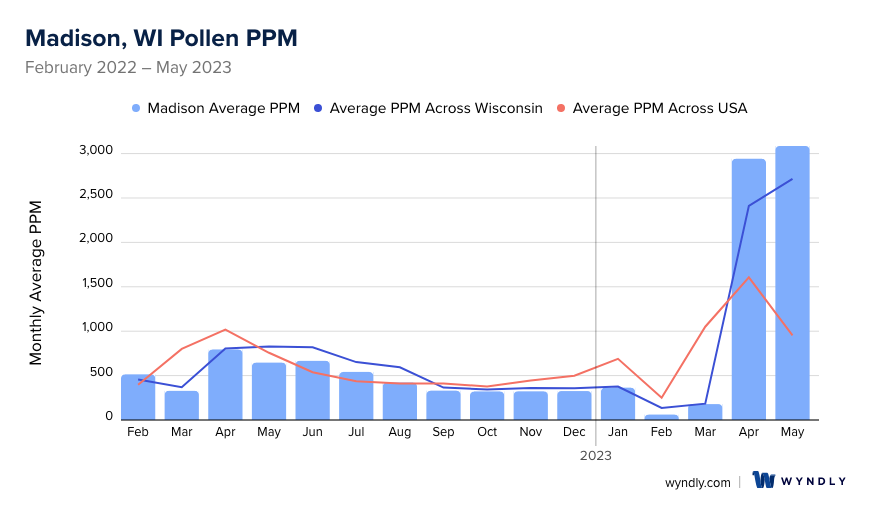
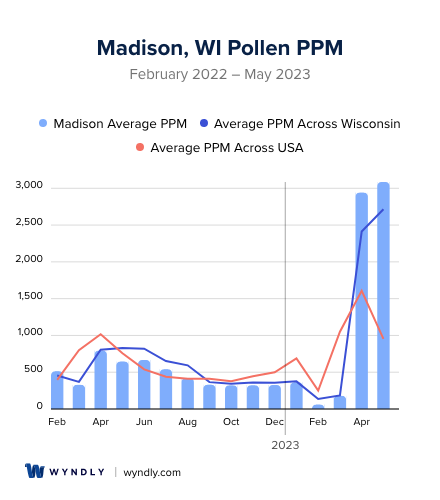
Madison, WI Pollen and Allergy Breakdown by Month
Grass
When is grass pollen highest in Madison, WI?
May has the highest grass pollen in Madison, WI with an average PPM of
When is grass pollen lowest in Madison, WI?
October has the lowest grass pollen in Madison, WI with an average PPM of
Tree
When is tree pollen highest in Madison, WI?
April has the highest tree pollen in Madison, WI with an average PPM of
When is tree pollen lowest in Madison, WI?
January has the lowest tree pollen in Madison, WI with an average PPM of
Weed
When is weed pollen highest in Madison, WI?
May has the highest weed pollen in Madison, WI with an average PPM of
When is weed pollen lowest in Madison, WI?
February has the lowest weed pollen in Madison, WI with an average PPM of
Madison, WI Pollen Monthly Breakdown by Pollen Type
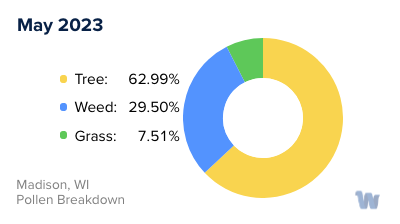
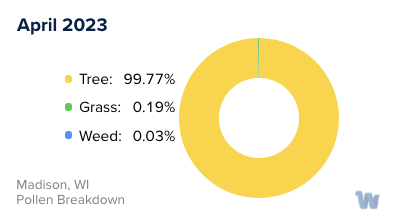
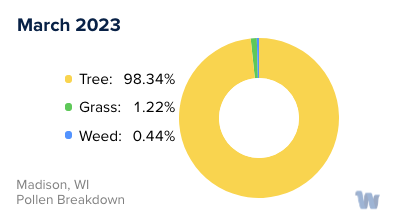
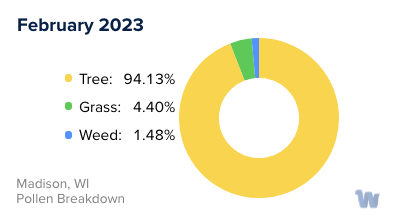
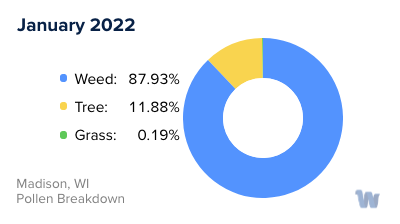
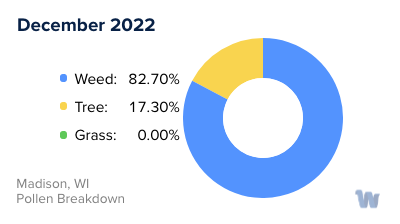
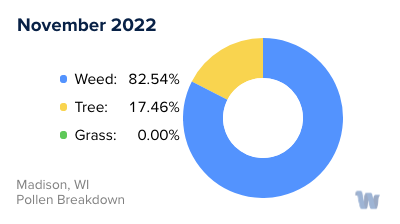
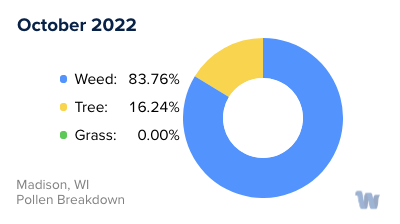
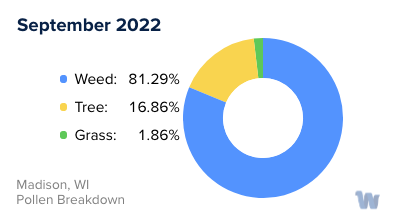
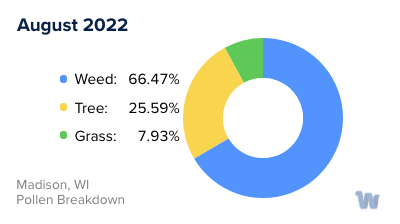
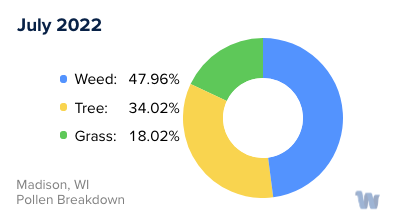
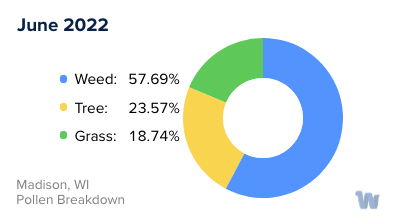
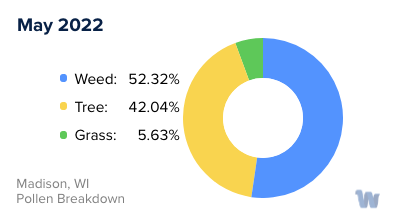
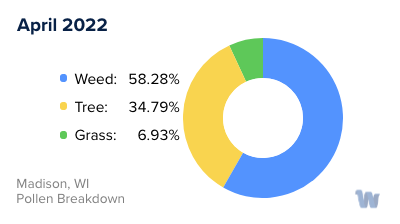

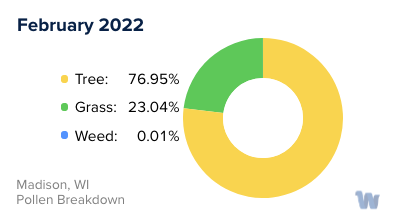
Pollen and Hay Fever in Madison, WI
In the picturesque city of Madison, Wisconsin, residents experience the enchanting seasonal shifts throughout the year. However, these seasonal transitions also bring with them an unwelcome guest for many - pollen allergies, commonly known as hay fever.
Pollen allergies are the body's overzealous response to tiny grains released by plants for fertilization. In Madison, the most common culprits are trees, grasses, and weeds, each of which releases its pollen at different times of the year.
During the Spring, typically from late March to mid-June, tree pollen is the predominant allergen. Oak, maple, and birch trees are particularly prevalent in Madison and are notorious for their high pollen production. This period can be challenging for individuals who are sensitive to tree pollen.
As we move into the warmer months of Summer, from late May to early August, the focus shifts from tree to grass pollen. Madison's lush green landscapes are mostly populated with ryegrass and timothy grass. These grasses are major producers of pollen, and thus, summer can be a peak season for those allergic to grass pollen.
As Summer fades into Fall, from late August to early October, weed pollen takes center stage. Ragweed, a plant that thrives in the Midwest, releases copious amounts of pollen and is the primary cause of hay fever during the autumn months.
It's important to note that weather conditions can significantly impact pollen levels. Dry, windy days can cause pollen to become airborne and spread over large areas, exacerbating symptoms for those with allergies.
In Madison, understanding the types of pollen and their corresponding seasons can help residents better anticipate and manage their pollen allergies. While the city's lush greenery and changing seasons are a sight to behold, they can pose challenges for those with hay fever. However, with awareness and preparation, Madisonians can still enjoy the beauty their city has to offer, even during pollen season.

